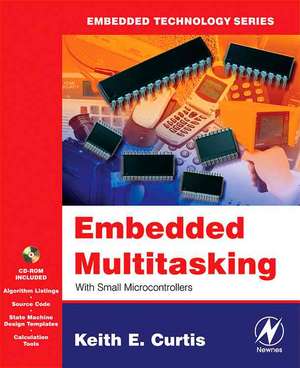Embedded Multitasking: Embedded Technology
Autor Keith E. Curtisen Limba Engleză Paperback – 8 mar 2006
- Covers every aspect of design from the system level to the component level, including system timing, communicating with the hardware, integration and testing.
Preț: 345.04 lei
Preț vechi: 385.12 lei
-10% Nou
Puncte Express: 518
Preț estimativ în valută:
66.02€ • 69.11$ • 54.95£
66.02€ • 69.11$ • 54.95£
Carte tipărită la comandă
Livrare economică 24 martie-07 aprilie
Preluare comenzi: 021 569.72.76
Specificații
ISBN-13: 9780750679183
ISBN-10: 0750679182
Pagini: 416
Dimensiuni: 191 x 235 x 27 mm
Greutate: 0.89 kg
Editura: ELSEVIER SCIENCE
Seria Embedded Technology
ISBN-10: 0750679182
Pagini: 416
Dimensiuni: 191 x 235 x 27 mm
Greutate: 0.89 kg
Editura: ELSEVIER SCIENCE
Seria Embedded Technology
Public țintă
PRIMARY MARKET: Embedded engineers and programmersSECONDARY MARKET: Engineering students
Cuprins
1.Introduction2.Embedded Basics3.System Level Design 4.Component Level Design5.Implementation and Testing6.Conclusions



























